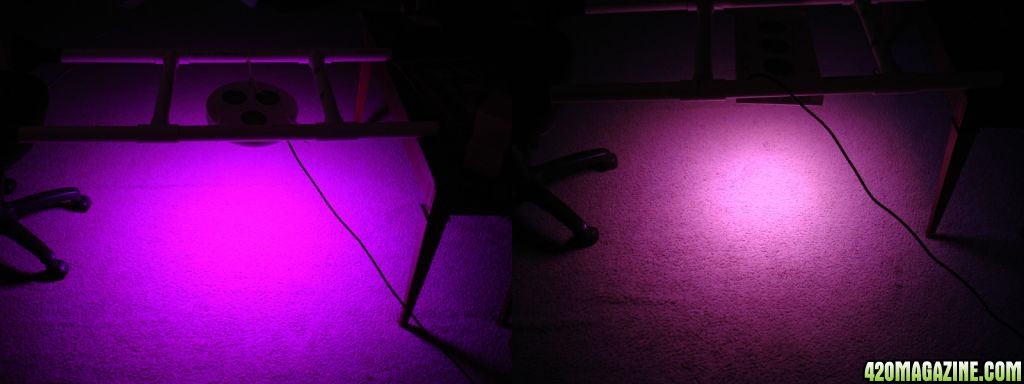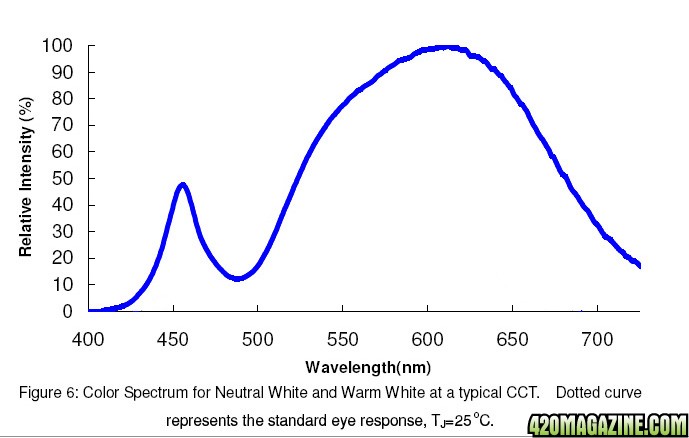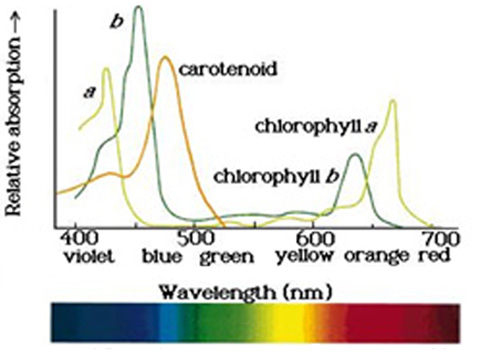- Thread starter
- #21
HydroGrowLED
New Member
You said the coverage of the lamp with 60 degrees is about half of the lamp with the 120 degrees LEDs. I could be wrong but isn't one-fourth off the coverage. What does this mean for the amount of lamps needed? So what if the 60 degrees isn't the optimal spread of beam?
If you take a 90W UFO and make 1 with a 120 degree Lens, and the other with a 60 degree lens, the unit with the 60 degree lens will occupy about half the space of the 120 degree. LED's emit the majority of their light downward, even if the angle is wider, so the bright area under the 120 degree is going to also be about twice as large as the bright area under the 60 degree. I have a picture showing a 90W unit at 120 degree next to a 120W unit at 60 degree, to give you a decent example of what I'm talking about, though not exactly:

The intensity of the 60 degree is necessary for penetration, which allows you to carry out full flowering with large, dense colas.




 )
)

